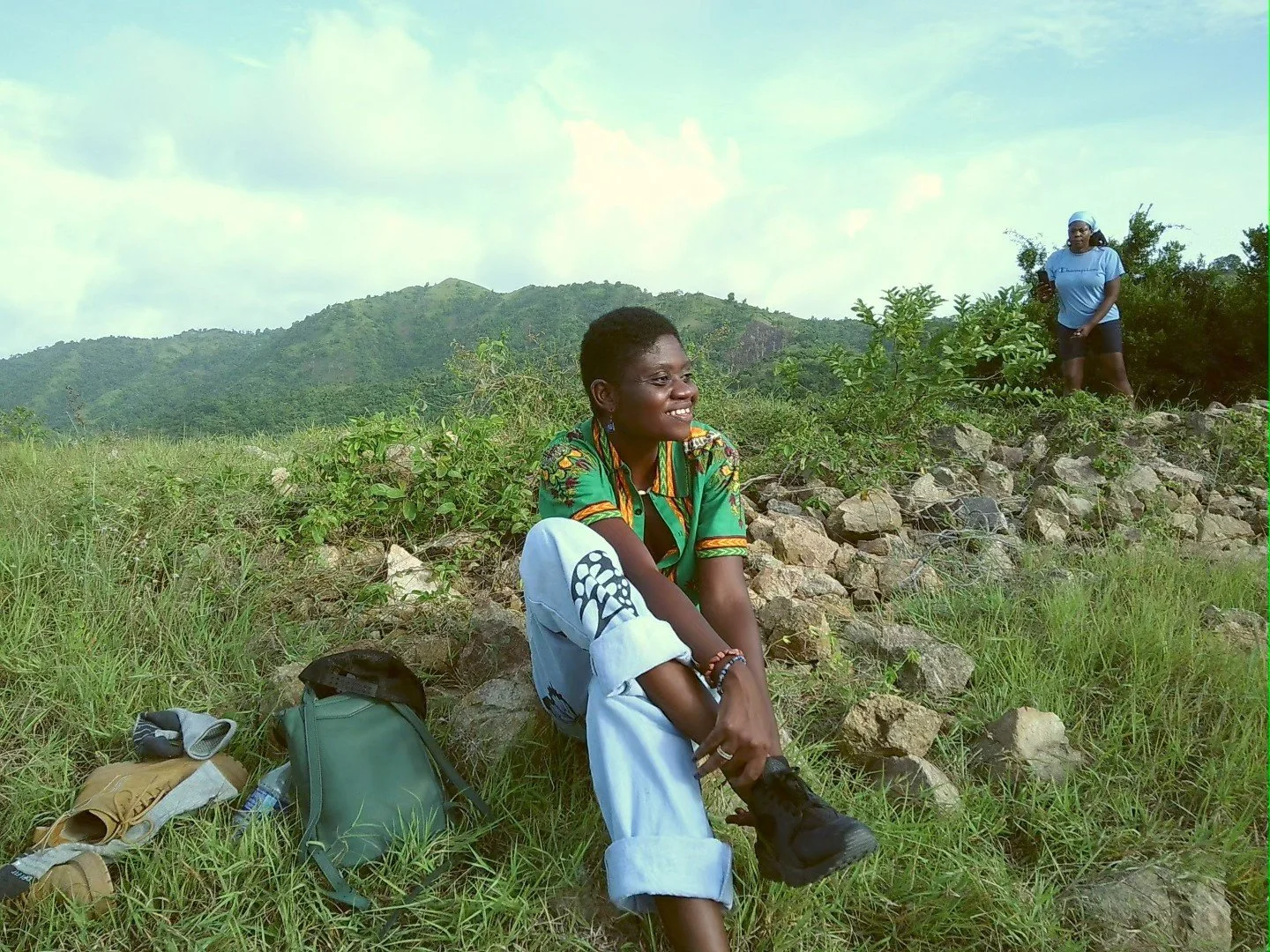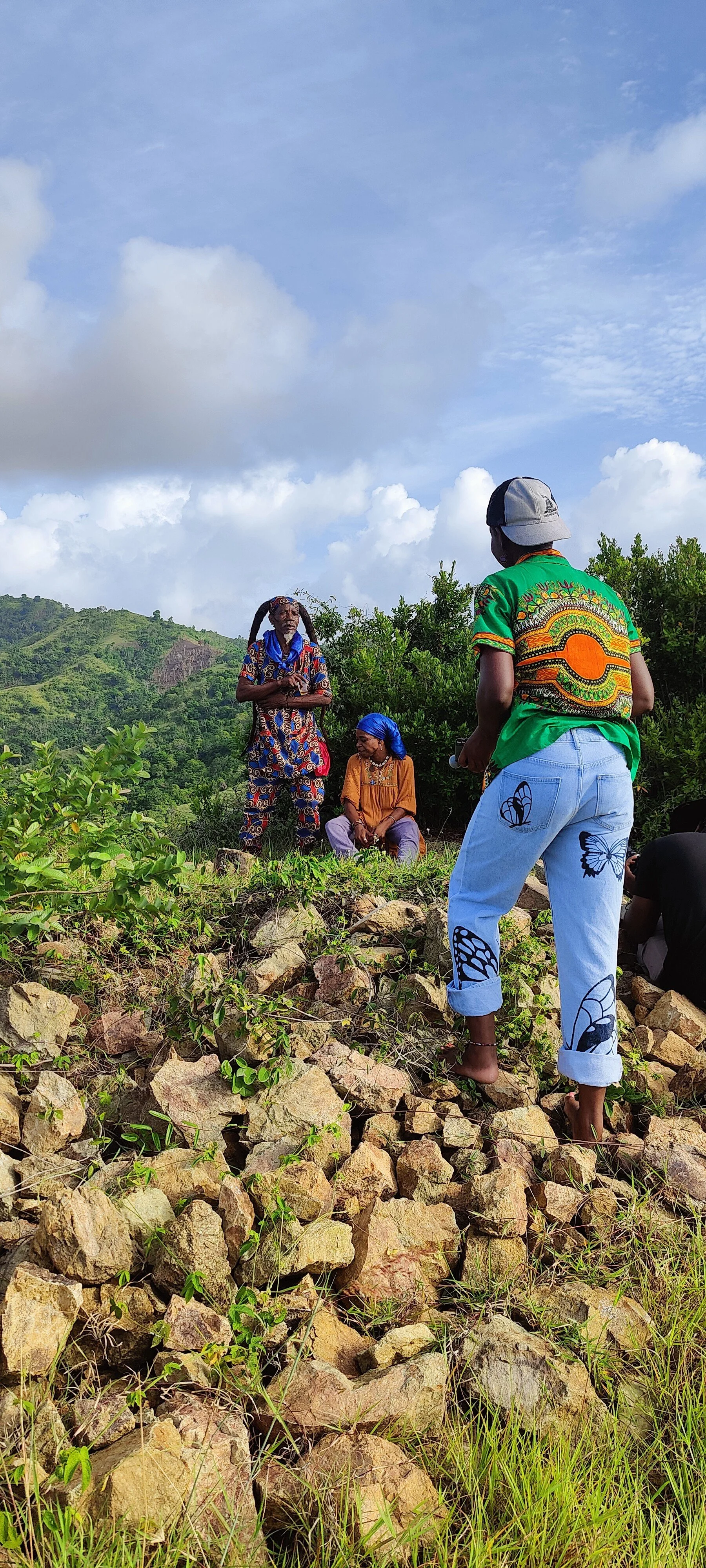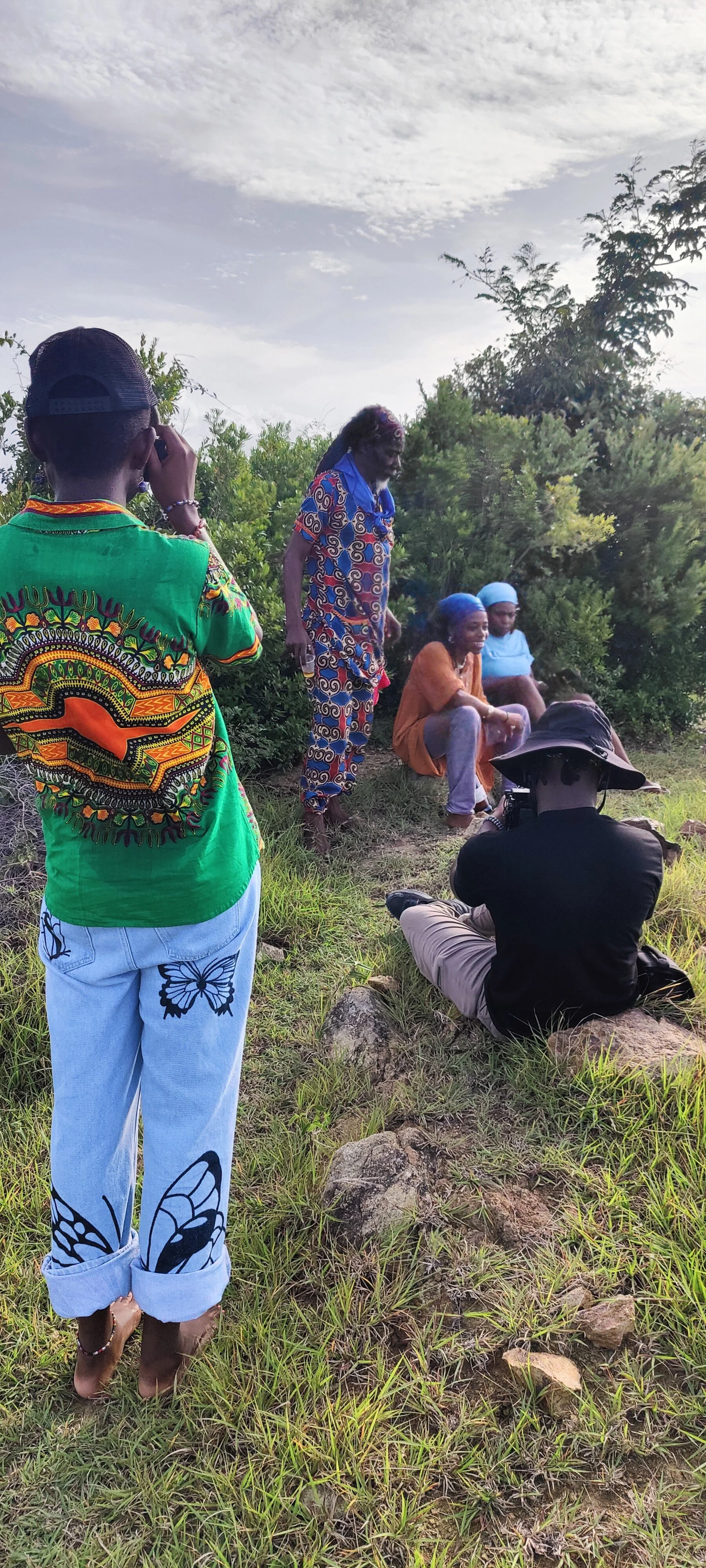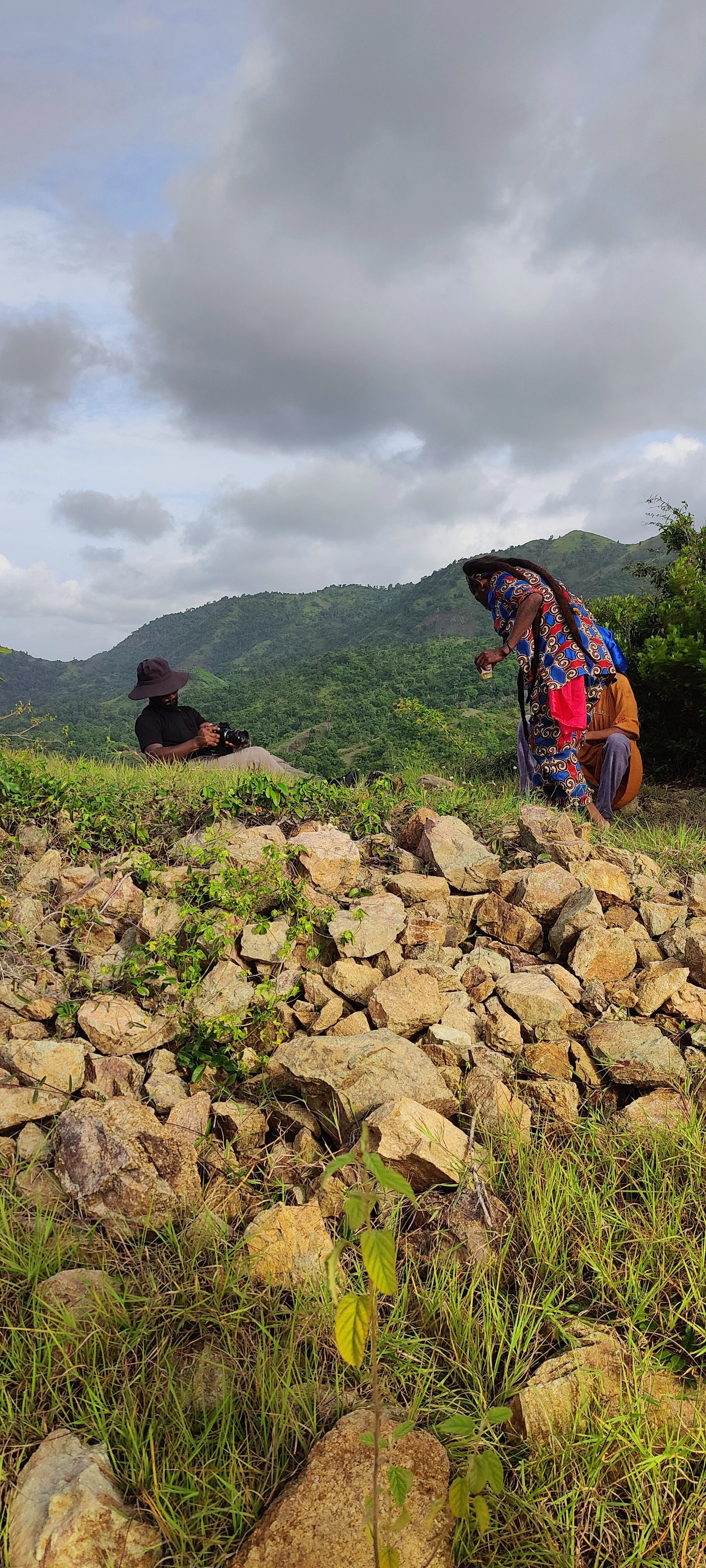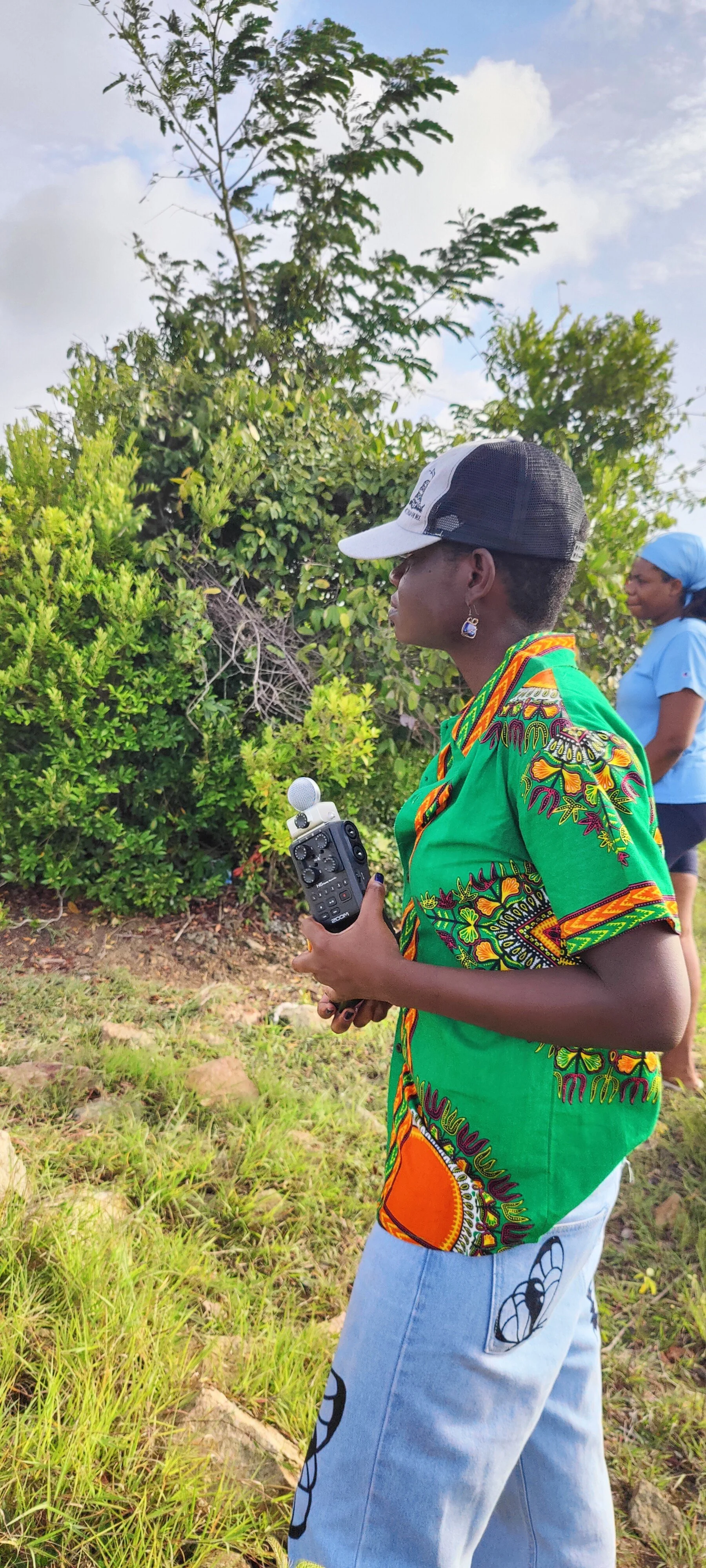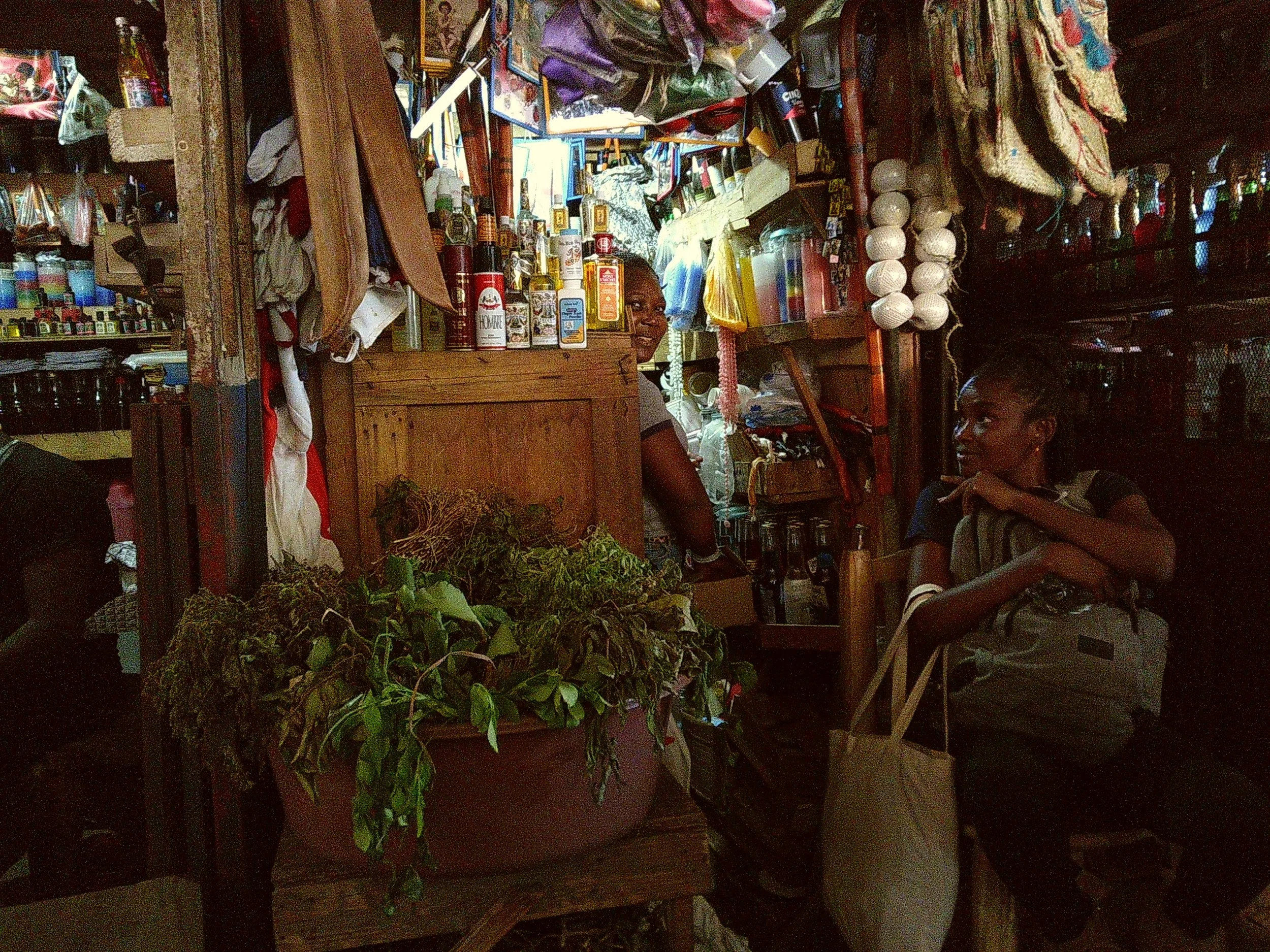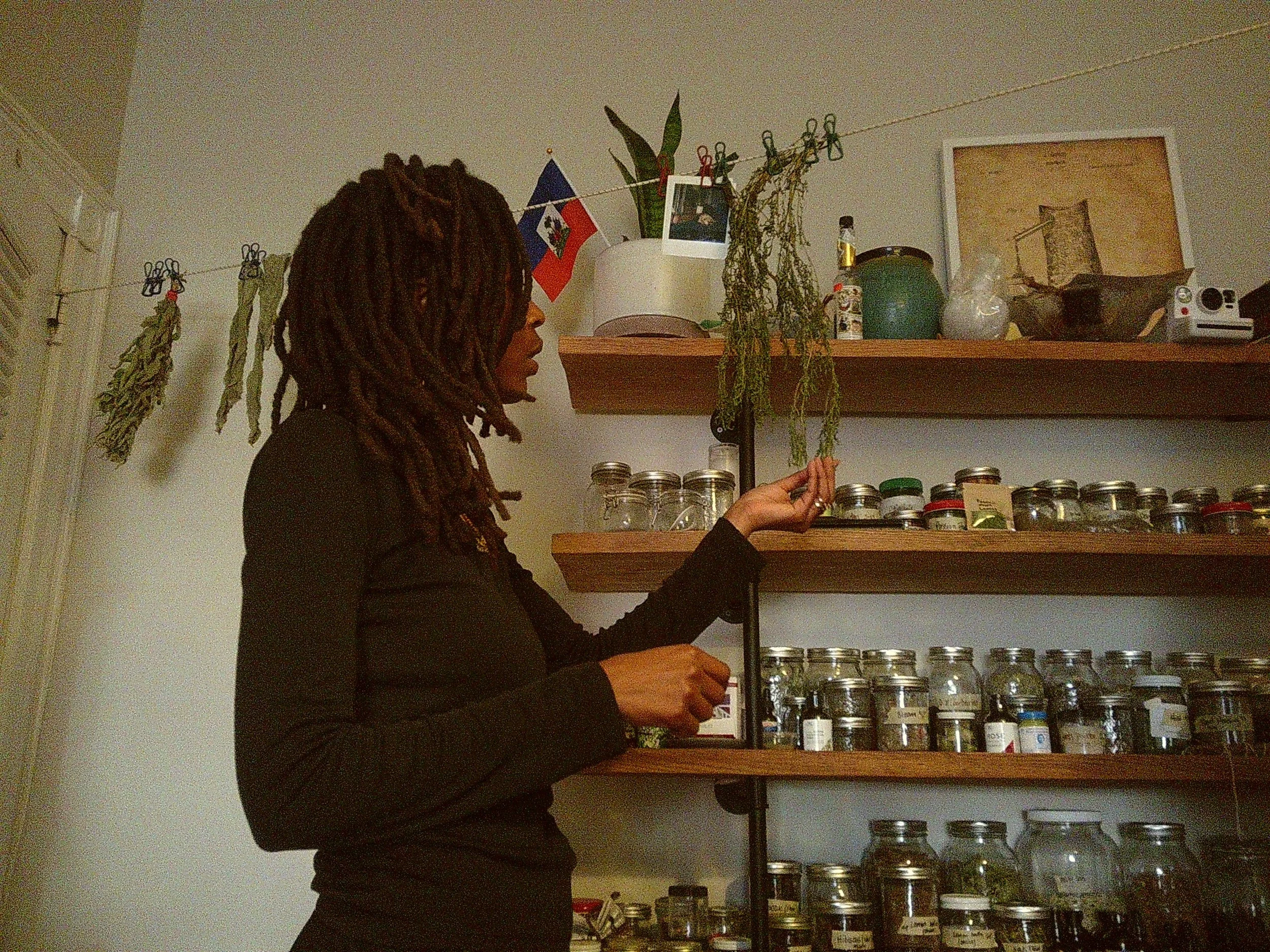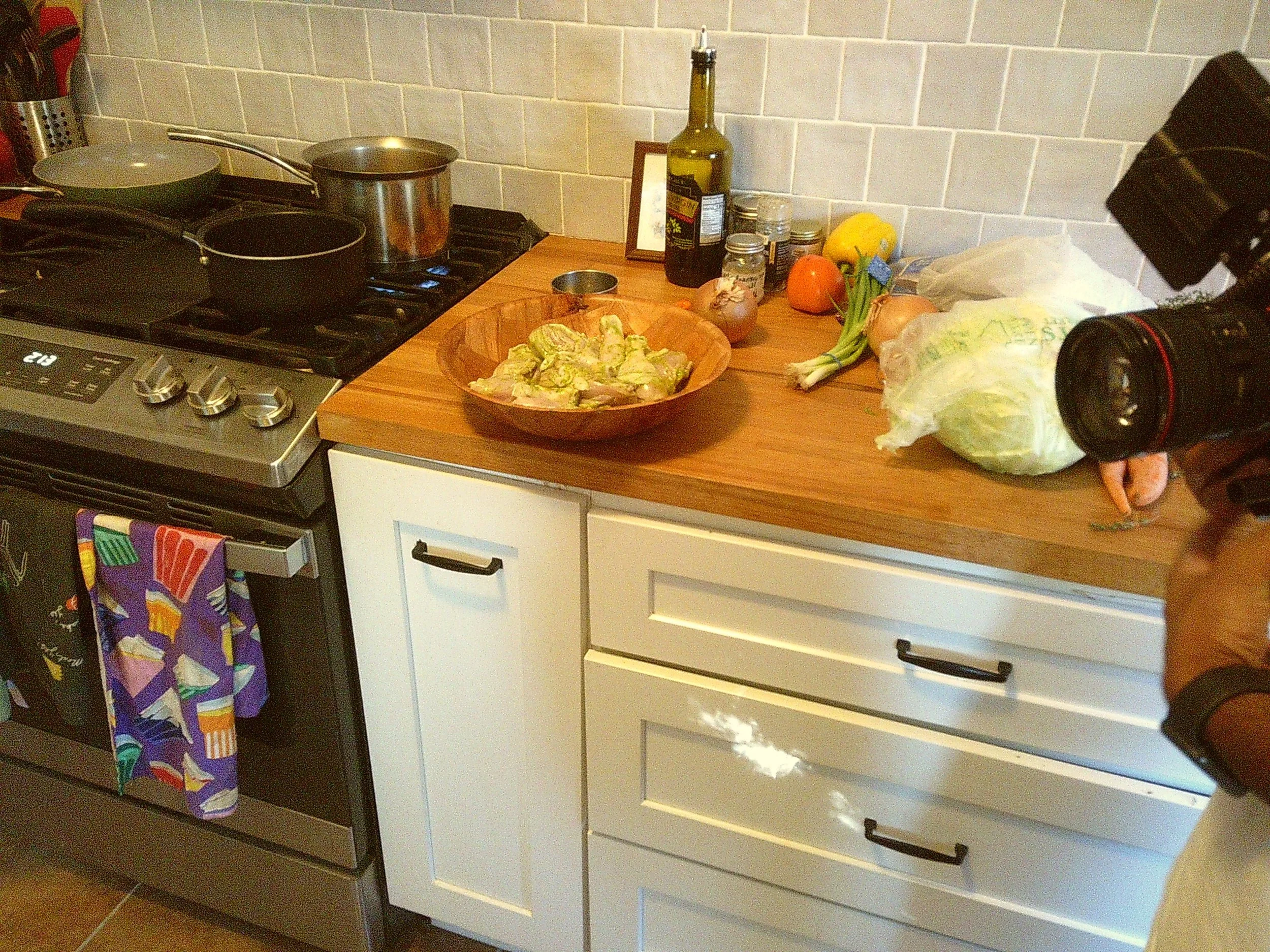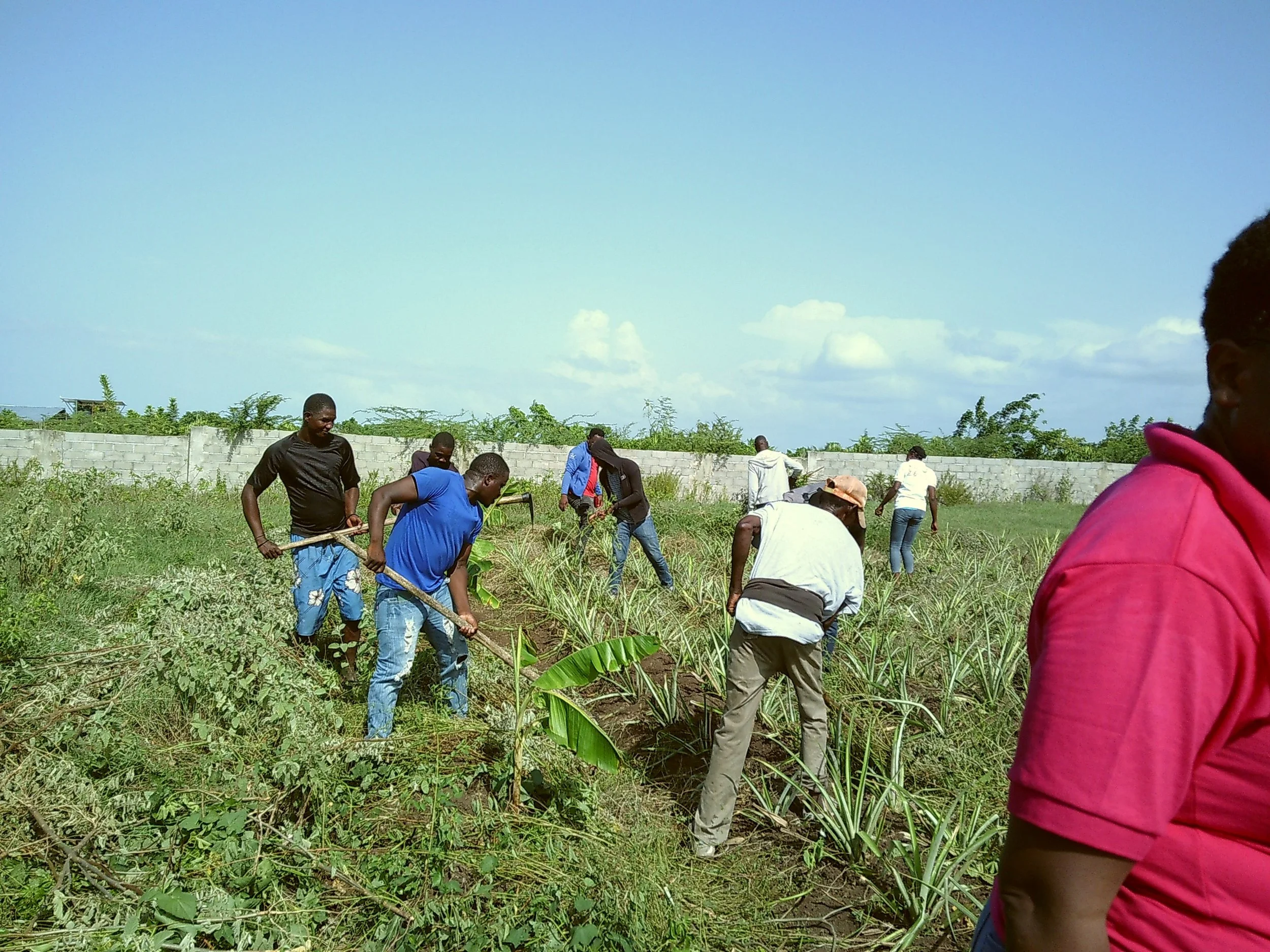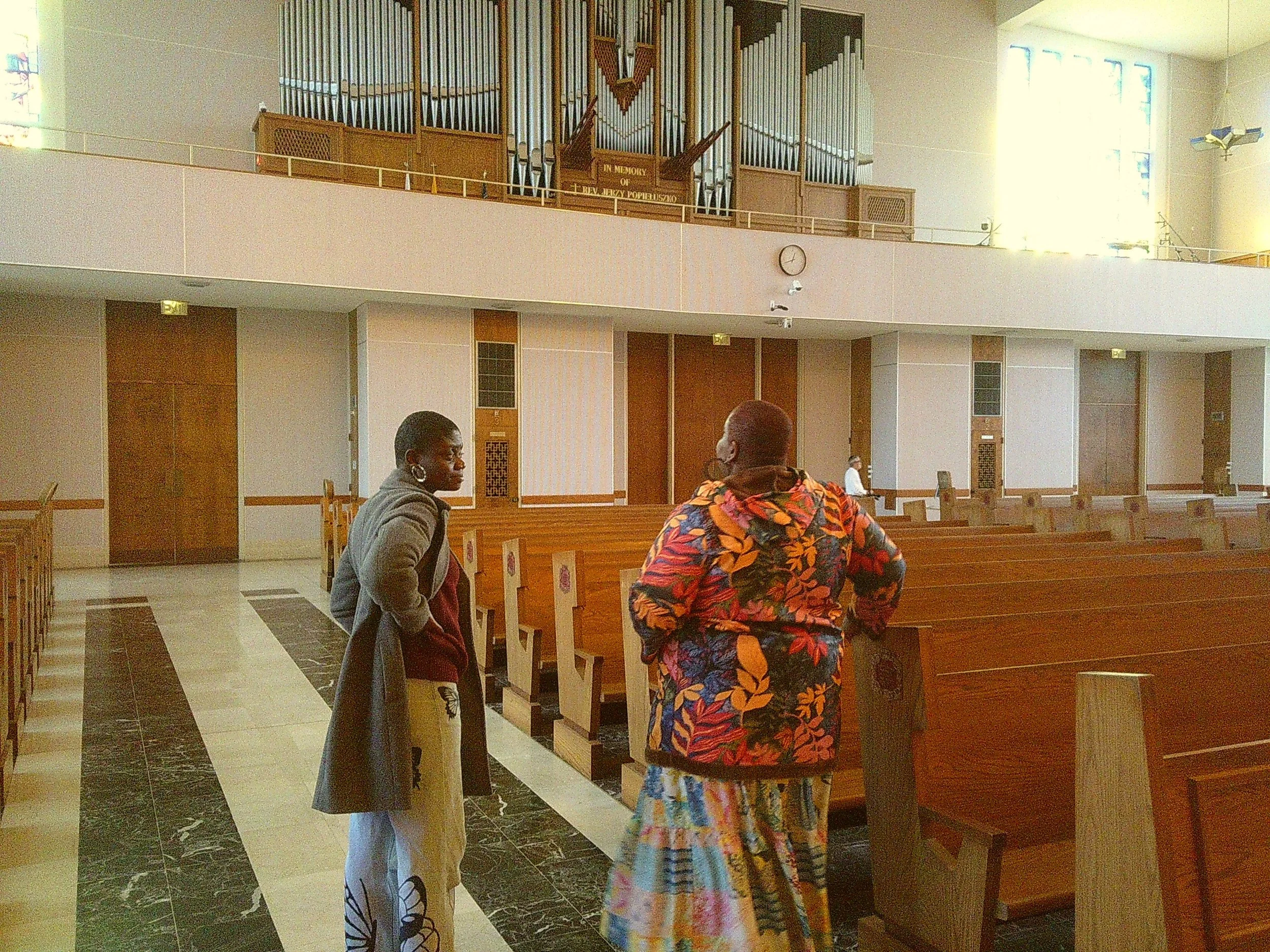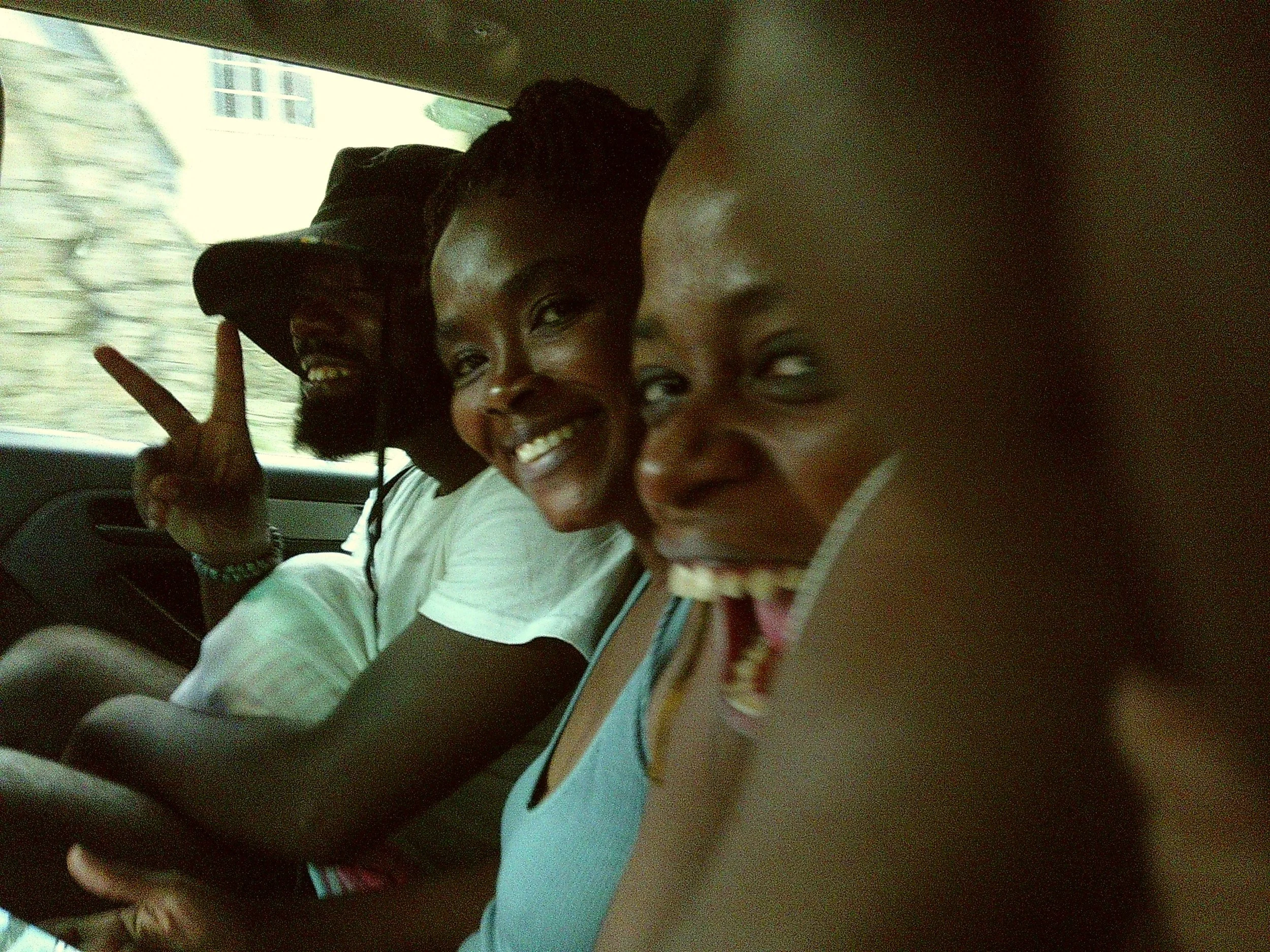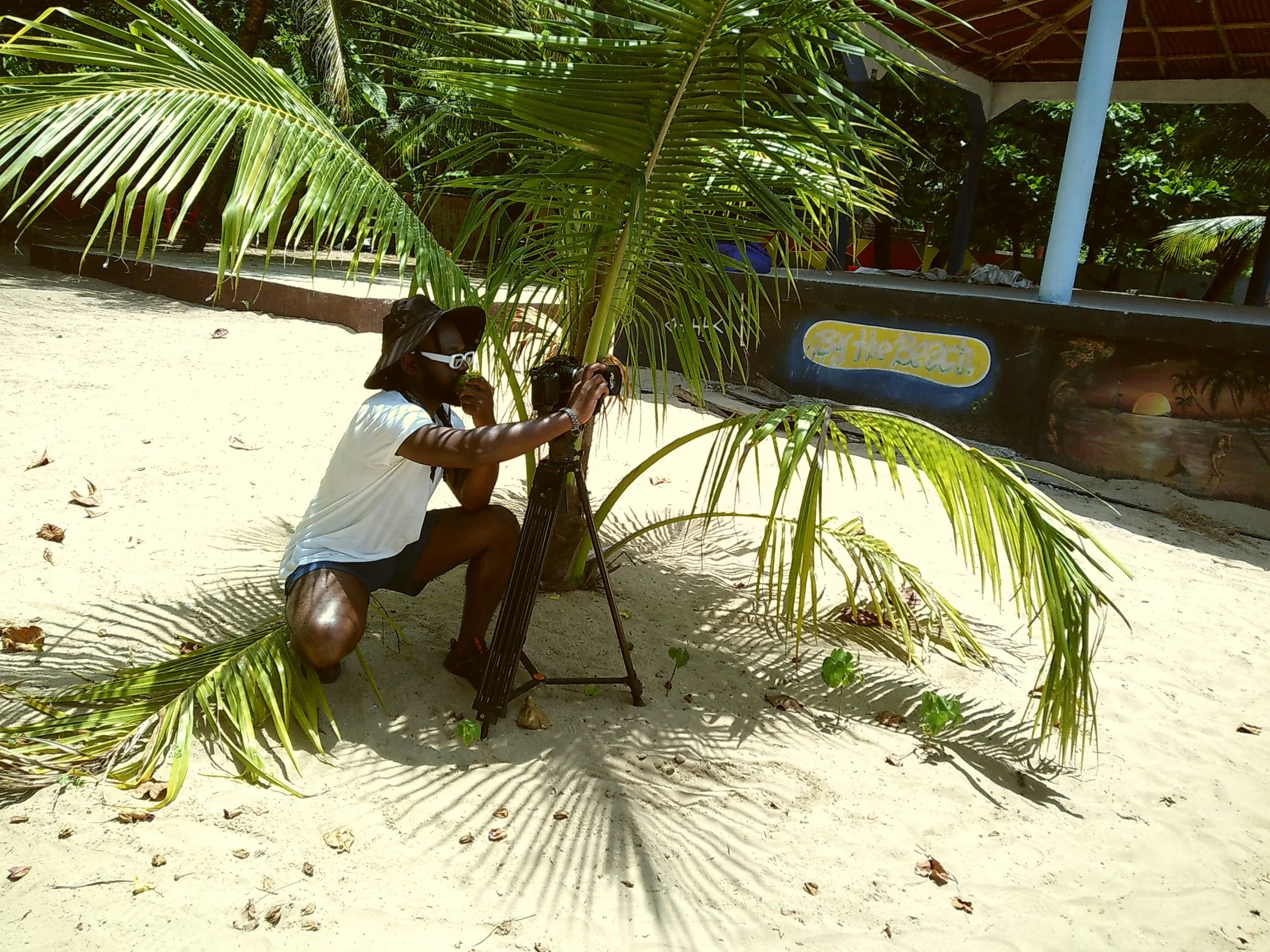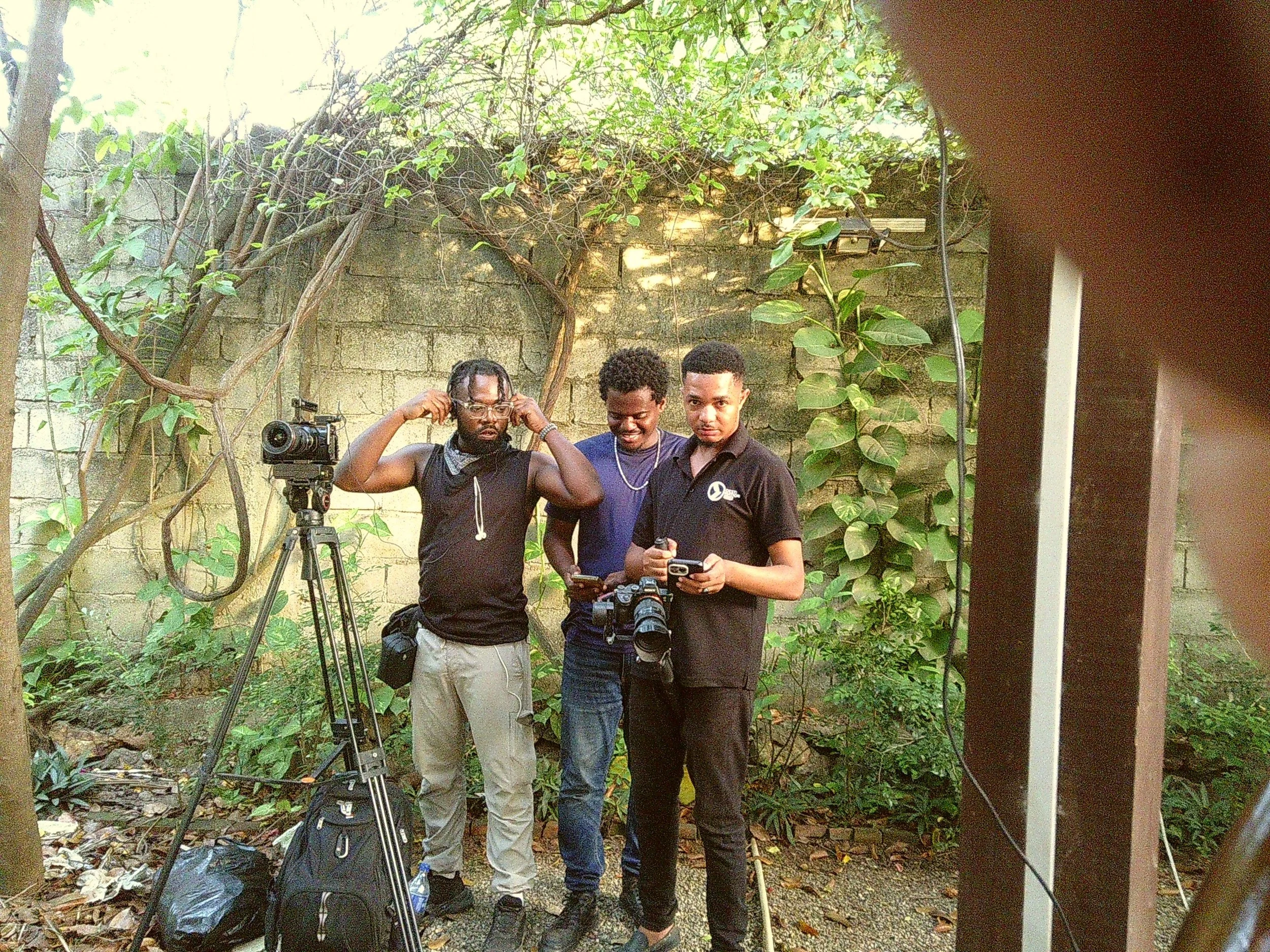In-Depth with a filmmaker: Lunise Cerin
Rolling into the 2025-26 season, our organization is still growing into the Journey Arts moniker. Always asking ‘What’s in a name?’-- our clearest answer lies in the ambitious works we help to realize.
MIWA, a musical and visual experience from Haitian-American sisters Talie Cerin and Lunise Cerin debuts this November 6, 7, and 8, inviting audiences to immerse themselves in a mini world-in-a-warehouse that mirrors and reinterprets the experiences of Haitian women. Interweaving curated works of art by Haitian artists, live musical performance, and segments of a sprawling documentary film in five parts— MIWA connects threads of Haitian cultural practices across geography and time.
As an intro to this emerging work, read on for parts of an in-depth conversation about process and inspiration between Filmmaker Lunise Cerin and Journey Arts staffer Sweet Corey-Bey.
Tickets for MIWA available here
**********
SCB: I’m here with Lunise Cerin, the filmmaker-creator at the heart of MIWA — introduce yourself!
LC: My name is Lunise Christina. A lot of people call me Tina. A lot of people call me Lunise. I am a queer Haitian American filmmaker, born in Philadelphia, raised in Port au Prince and also in Philly, living and residing and thriving and making art with and in queer black radical community in Philadelphia in 2025
SCB: MIWA is the documentary at the center of the immersive production coming to Journey Arts November 6, 7, & 8 with an curated exhibition installation, and live musical performance, all at Icebox Project Space! Can you give me the ‘elevator pitch’ for the MIWA film?
LC: MIWA is an observational documentary tracing traditional practices in Haiti and in her diaspora. It is an attempt to reconnect something that I think hasn't been acknowledged in the media– the very real through line between Haitians in Haiti and Haitians in the diaspora. MIWA is a celebration of tradition. It's a celebration of inheritance, of remembrance, of a people who continue to struggle, but continue to preserve and move and live in a very specific way, in community, with the land, with spirit, with our families, and with each other.
I find myself thinking about MIWA as a present day archive, or a library of Haitian celebration and practices.
It's actually amazing that we're showing MIWA as an exhibit first, because it means that I can sit with certain themes without having to give it a narrative arc and just kind of expose you to it and move on.
SCB: Tell me about how you approach creation or like your creative process.
LC: I like to have a very porous process. I like to make space for my art. I don't like to ever pretend that I know what I'm making. I understand my art as more of a, like, channel. I am the recipient. And I gotta keep it warm until it comes into the world. But if it's gonna keep coming to me– and I'm asking to receive it, and I won't be like, ‘Well, I had said that this was going to be one way’. I've got all these other new things that are showing up and it's going to be an ever evolving thing until it’s right.
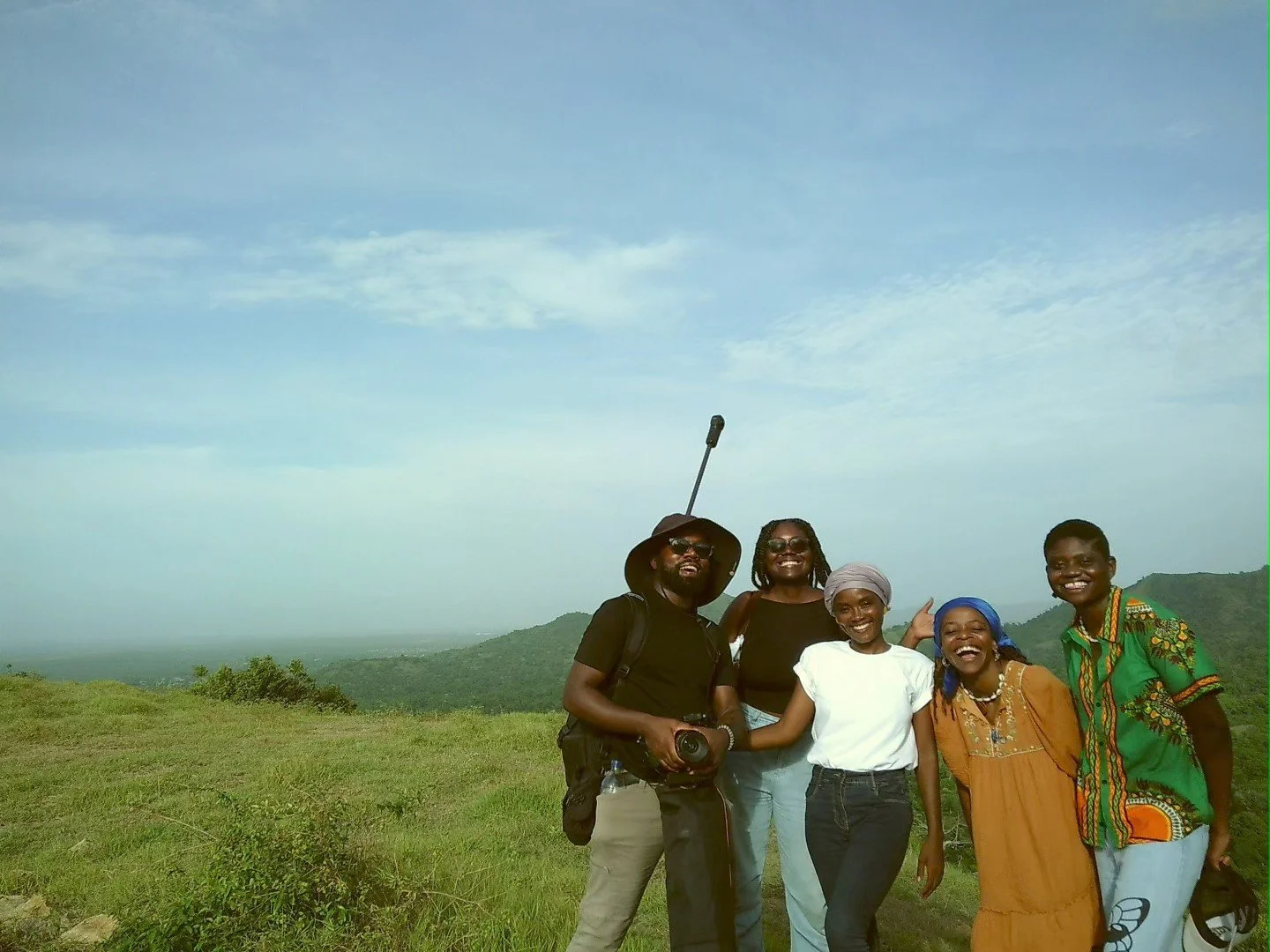
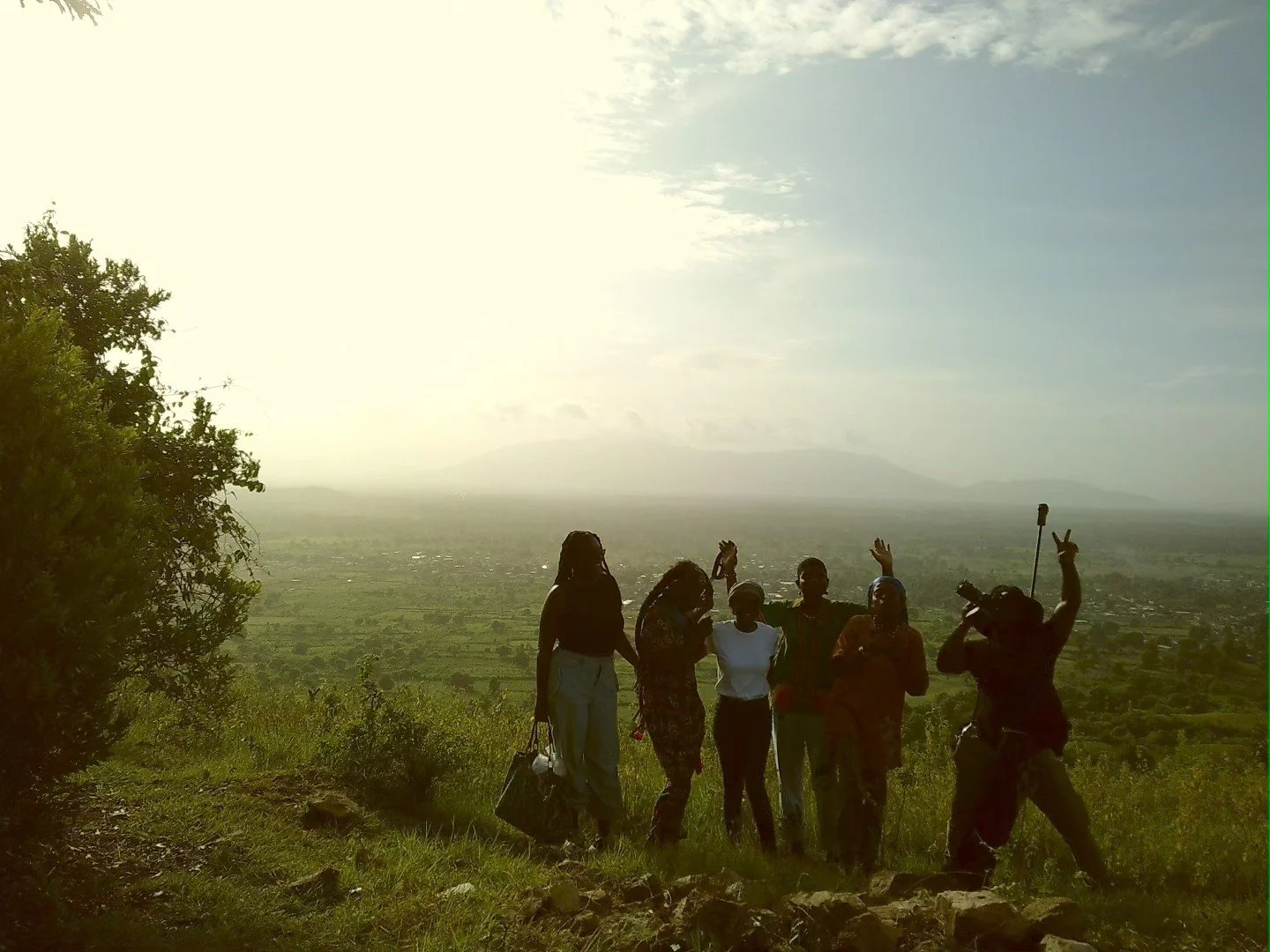
SCB: Tell me more about the exhibit aspect of the project that’s developing?
LC: The exhibit itself is an immersive experience.
We have five themes: identity, community, land, celebration, and spirit– and we're creating these small spaces where the design is in conversation with these themes. I'm thinking about them as rooms in a house!
We are still in an ever-evolving process for the land room in particular– but we're planning to create a garden. We are bringing in dried herbs, soil, and baskets. I'm preparing these fermented pickled jars of peppers, pikliz, and jams– all kinds of things that you would find in a Haitian pantry, of how we preserve food– traditional things that we do with the harvest. Bringing these into the space will kind of create that garden kitchen vibe.
SCB: Wow! I love that. So I imagine that the part of the film screened in the land room will also thematically focus on food or a similar aspect?
LC: Yes! The video that I've cut for the land room is on our practice of soup joumou, which is the pumpkin soup that we eat as a celebration of our independence. The very first January 1, Haiti woke up a free nation, and we made soup joumou. It's part of our foundation as a people and our history. It's one of the most widely observed traditions — wherever you find Haitians there will be soup joumou on the 1st.
We –me, my sister, and my mother—host and serve soup joumou at our home every January 1. For the last four years, we have a party – so for the film, our soup joumou was actually the very first thing that we shot! We shot here in Philly, and also in Cap-Haitien at my cousin’s home and with an organization named Sonje Ayiti who was doing a soup joumou distribution. They prepared 1,200 bowls of soup joumou that they distributed through the city. And Sonje Ayiti also started a farm with the seeds from the first soup distribution.
We filmed at that farm, and they gave us seeds that we brought back to Philadelphia. Some of the participants in our film planted those seeds in their own gardens and this part of the film follows the process of the history, preparation, and inheritance of how we learn Soup Joumou . It's just a tiny glimpse, but it's such a strong glimpse of Haitian identity around one tradition.
“There’s a relationship between the kitchen and the land– how we cook and what we grow, and how we take care of each other with the land, and how it feeds us.”
SCB: It sounds like this work is very personally held, but also made in the reflection of your community both at home in Haiti, and home here in Philly– or across the diaspora.
LC: I have so many Haitian American friends who feel so disconnected from Haiti and so disconnected from Haitian identity, holding on to Haiti as something that belongs to them. But I am able to witness when I spend time with them, that *this* is the Haitian– the way that you show up in spaces, the way that you love, your fierceness, your power. That — that struggle, that pain that transcends boundaries. It's not something that you can just shirk.
You can't just stop being Haitian, even if you want to.
I’d also say Haiti has a real narrative coverage issue. You can't always just Google a Haitian thing and find it. We're not on Google– which is kind of a flex, but really it isn't because it means that you can have a million questions, and only the people who may be right next to you can tell you what it is or what it could be. It means you're limited to the narrative of whoever is immediately in contact with you, of what Haiti is or isn't. So Haiti is inaccessible to her children. And I think that that's an issue!
SCB: Your personal lived experiences, your organizing– really even how you identified yourself at the start of this conversation I think speaks to addressing that issue. How is that inspiration motivating the process of creating this film, and this performance exhibition?
LC: I grew up in Haiti, you know, I had a lot of my formative experiences in Haiti, and I moved back to Philadelphia in high school. I'm a photographer, I'm a documenter of things– I'm a sharer! I like to share things so I’ll find myself sharing a Haitian song, a Haitian dish, a Haitian dance. I'm trying to tell people that we [Haitians] have this really rich and interesting, vibrant culture, and me and my sister are the only reference point for many. And we're awesome. Meet us! But we can't be the entire reference point.
Living in Philadelphia especially, when you want to be in Haitian community, it mostly happens in the church. And what happens when you leave church is that you also leave Haiti.
Again, my point is Haitian experience can’t be boiled down to one thing– this place, these people, these circumstances, like that is too myopic of a vision of Haiti.
And resisting that narrative thrusted me into this project– this enormous project of documenting Haitian traditions and practices, celebrations, spiritual practices, cooking practices, you know, dance, art, theater, whatever we could get for the last year, and trying to boil it down into a film.
SCB: Tell me about some of the collaborators who have helped you bring this film to life?
LC: I've had a really great team in Haiti. My producers were my sister Mélodie Cerin, and Leonica Pierre-Mainthus, who are two Virgos that I’d put on any project! This film is brought to you by three Virgo baddies.
Leonica particularly, who is an actress, host, and producer that I met at a cousin's party. We were both in film, and we were like ‘Let me know, I'll work on your thing. You work on my thing’. I hit her up when I was starting to make this film, and she is just a dream collaborator.
Leonica has a network of film people all over Haiti that we could hit up– I would send these extensive voice notes explaining what we're attempting to do, which the description for most people, especially for the DP’s (Directors of Photography) was - we are making a film that is following the hands of Haitian women as they prepare food, as they prepare clothes, as they prepare masks for Carnival, as they prepare their music for a parade and as they prepare, we're asking them how they learn to do this?. How did they learn this tradition? Where did it come from? How was it inherited?
When you're watching a lot of these videos, you'll see a lot of hands, because this is about the making, transmission, and the keeping. A lot of that happens with our hands.
SCB: And your co-conspirator, co-collaborator Talie! What has the process of the development looked like with the exhibition performance coming together, and the score of the film?
LC: I just got emotional. Talie's my best friend. You know, she's two years older than me. We're the last two of five siblings. That's my girl! And this project– my first concept was I knew I wanted to make a film with Talie's music.
Talie brought Journey Arts to me, and brought me to Journey Arts. The org had approached Talie about making some arrangements with an orchestra. And she was like — you know, I have a sister who's a filmmaker. We can make this collaboration even more.
I was not even pursuing this project yet. But I visualized the images and music collaging together and then the idea of like traditions emerged.
MIWA is the first project that we're doing together in this size. We're thought partners in this life and we're on all of each other's projects.
Talie did the music for my film, Victorine. I shot her music video for her song, Limye. We collaborate. But it's usually like, this is my project. You're a collaborator. This is your project. I'm a collaborator. Whereas MIWA is like this, this is my project, this is your project, and they go together. Our projects. It's our project.
We're both, we're both enormous artists. We're both incredibly territorial and have very strong and clear visions.
What's been really fun as the music is coming out is sending her clips from my field recordings and she's sending me her lyrics. But through lines that are emerging are happening without either of us having to take a step anywhere. Our work– they love each other because we're pulling from very similar places. The channel is almost the same channel. It is a joy to create something that I believe in with someone that I believe in so much.
SCB: I'm such a big fan of you both and I appreciate what y'all relationship ushers into the world. Here’s one final question from me– how did the name of this project MIWA come forward?
I have to tell you, Talie came up with that title when she pitched it to Journey Arts. I was calling it something else but she was correct, as she often is. ‘Miwa’ is Kreyol for ‘mirror’ and I think that’s exactly what this exhibit and this film is trying to do, to reflect something back to you. To remind us that we are a reflection of each other, and to remind us of all that we still share despite the distance.
SCB: Is there anything else that you want to share that you haven't already?
I have no doubt that MIWA is going to be exactly what we want it to be. All of the intention and amazing collaborators are on this project– all of just like the time that we're pouring into each detail. This is going to be awesome!
Please come to MIWA, November 6th, 7th and 8th.
**********
This conversation has been conducted, edited, and condensed for clarity by Sweet Corey-Bey

